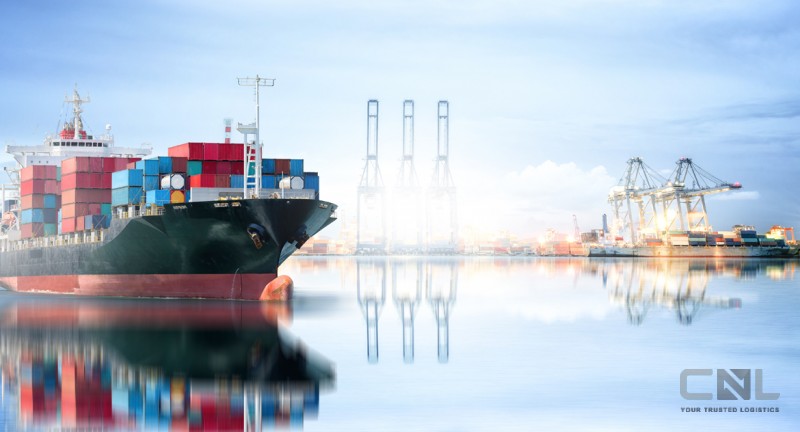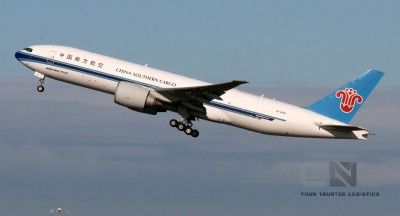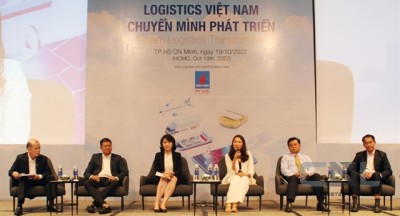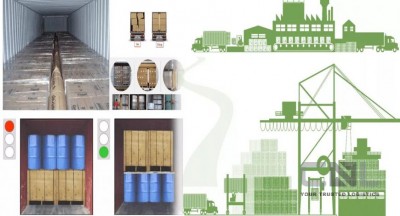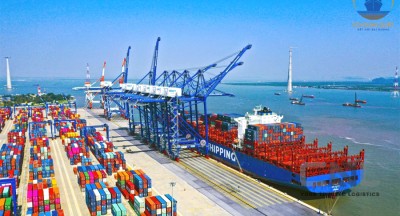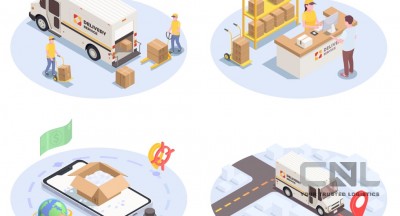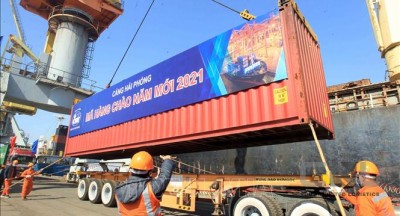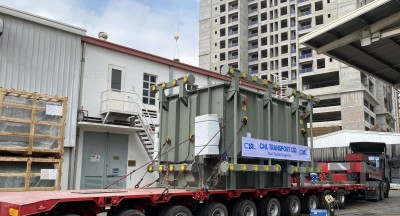Reasons for high logistics costs
Logistics is a chain of services that transport goods from the place of production to the place of consumption. VLA statistics show that Vietnam currently has about 4,000 enterprises providing international and domestic logistics services, of which up to 97% are small, medium and micro enterprises. Therefore, the quality of services, capital, experience, management level, information technology, digital transformation, human resources are still limited. In addition, international transport services are dominated by foreign carriers, leading to the situation of costs being pushed for the carrier, Vietnam.

Loading and unloading container cargo at Quy Nhon port (Binh Dinh)
Through research, the proportion of Vietnam's agricultural exports is large, while the value of this commodity is low and high risk. Logistics costs are pushed up due to the loss of agricultural products during transportation. It is estimated that every day this item loses about 2-3% of its weight. Meanwhile, Vietnam's group of high-value exports such as footwear, textiles, machinery and spare parts, textile fibers, phones and electronic components ... cannot be compared with the export value of low-weight, high-value goods in other countries, such as software, scientific and technological products, automobiles...
According to Mr. Tran Duc Nghia, Member of the VLA Executive Committee, the high cost of logistics in Vietnam is due to factors such as: The cost of transporting goods by road is too high; surcharges at seaports that foreign container ship owners are collecting from Vietnamese shippers; restrictions on seaport infrastructure; fees for using seaport infrastructure; specialized examination fees...
In fact, logistics activities in Vietnam are mainly dependent on road transport. Popular modes of transport in the logistics chain include rail, waterway, road and air, but road transport accounts for nearly 80%, making transportation costs large, second only to air transport. For example, to transport a cargo container from Hai Phong to Ho Chi Minh City by sea, the freight rate per container costs from 5-7 million VND/trip depending on the booking, but road transportation takes up to 30 million VND/trip/way. That's a huge difference in price...
Another reason why road logistics costs are so high is due to regulations prohibiting large tonnage vehicles from entering the inner city to deliver goods. For example, with a market of 7.7 million people such as Hanoi, 42 industrial parks, more than 80 industrial clusters, hundreds of supermarkets, tens of thousands of convenience stores, hundreds of thousands of people's markets ... but trucks of 1.25 tons or more are prohibited, which can only operate a certain number of hours. This makes it difficult to access goods, forced freight rates when renting small cars to transport to where needed, incurring many costs such as renting more trips, adding carriers ...
How to reduce logistics costs?
Vla's report also shows that currently 90% of logistics enterprises operating are Vietnamese enterprises, but only account for about 30% of the market share, the rest belong to foreign enterprises. Although the issue of seaport exploitation is mainly in the hands of Vietnamese enterprises, including road transport activities, warehouse supply, warehouse services ... but the biggest limitation is that it has not been able to invest in building large logistics brands in the international market, so the brands of the logistics industry are still in foreign hands.
Meanwhile, foreign brands have been growing for years now and they have a global network. Every country must accept the existence and learn from experience from prestigious international brands to develop, because most foreign logistics enterprises have a large scale, the transport capacity of each ship is equivalent to 5,000 container shells / route / way. To transport this large volume of containers, Vietnam needs to invest in many ships, with a large budget to prepare for services in the logistics chain...
Mr. Tran Duc Nghia said that only when Vietnam has an international logistics brand can it increase market competitiveness. Vietnamese logistics enterprises now need to have a basic accumulation stage to "overcome themselves". In the short term, businesses should participate in the global supply chain, to gain experience, Because with its special geographical location in the dynamic development area of the region and the world, Vietnam is considered to have great advantages to boost production, export and logistics services.
"In the short term, the logistics industry needs to strengthen the supply chain's ability to adapt to risks; accelerate the process of digital transformation and application of information technology. In the long term, it is necessary to continue to improve policies and laws on logistics and transportation services; amend a number of regulations and supplements on logistics and transportation services in the Commercial Law, creating a favorable legal basis for logistics activities; At the same time, amending and promulgating new policies and laws governing logistics services, multimodal transport, cross-border transport ... to reduce logistics costs through dealing with supply chain bottlenecks; promote the rapid development of low-cost freight transport modes", Mr. Tran Duc Nghia shared.
Son Van/News Newspaper -baotintuc.vn
